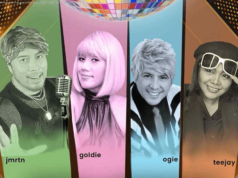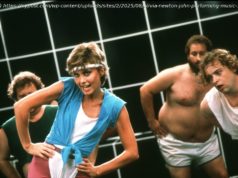Steinway & Sons is striking a chord with buyers with its self-playing Spirio grand pianos: Price: $99,300 and $133,000, depending on model.
Steinway is striking a chord with a new segment of buyers. And some don’t even know how to play the piano.
The key to its newfound success? A technologically sophisticated self-playing grand piano that retains the 165-year-old brand’s rich musicality.
Made in concert with piano engineer Wayne Stahnke, the Spirio uses a mobile app and an iPad included with the purchase to activate the performances of masterful artists such as David Benoit and Bill Charlap.
It costs $99,300 for the 5-foot-7-inch-long, 560-pound Model M Spirio and $133,800 for the 6-foot-10.5-inch, 760-pound Model B Spirio.
The piano is a far cry from the days when Rachmaninoff and Stravinsky tickled the ivories. But it’s putting Steinway on the map for buyers who never thought they could enjoy a world-class, high-resolution piano performance in their home.
“It’s a player piano, but we call it a re-performance piano,” CEO Ron Losby said in an interview. “It is a seamless melding of 21st-century technology and Old World craftsmanship.”
The path to a self-playing piano came about after hedge fund manager John Paulson’s Paulson & Co. acquired Steinway in 2013. Paulson was riding high at the time after famously reaping billions from his bet against the housing market.
Yet just a few years ago, the piano maker’s sales weren’t so melodic as young Americans turned away from music for other pursuits. Also crippling: The Great Recession ushered in tighter spending among concert halls and other institutional buyers. From 2007 to 2012, Steinway sales had slumped 13%.
Paulson’s personal love of the piano traces back to his formative years as a kid, when his piano-playing sisters begged his father for a Steinway. His family couldn’t afford it at the time, but Paulson’s father scraped together enough money to instead purchase a baby grand piano.
« But it wasn’t a Steinway, and I remember my sister crying at that time — and I realized how powerful the draw was for musicians to play on Steinway, » Paulson, who could not be reached for comment for this story, said in a video interview posted by the company. « My viewpoint is you can’t have too many Steinways. »
Steinway began spending heavily to develop the Spirio self-playing piano, which made its debut in 2016, and expand sales in foreign markets.
Steinway has hundreds of hours of performances available on the Spirio, which uses a complex system of optical sensors and proprietary software to translate hammer velocity and ensure proper pedaling. Owners get free access to the growing catalog.
“We’re able to actually recreate the keystroke — the hammer hitting the string — in the exact way that it did when the artist played it,” Losby said. “It makes it much more musically enjoyable.”
After a gradual rollout in 2016 and 2017, the instrument already has become about 30% of Steinway’s grand piano sales, said Ben Steiner, the company’s chief financial officer.
Losby has bigger plans for the Spirio, which he called a “platform” that could be used to translate live concerts into home performances and could even be used to teach people how to play.
“If you’re at home one night and in your local concert hall you’ve got Billy Joel playing a concert, it is very possible today that if you have a Spirio in your house, you can enjoy that concert in real time on your piano — not over a speaker system, but actually he’s activating your particular piano in your living room while you’re in the comfort of your home,” Losby said. “That’s what we call a remote performance, and that’s something that will be very realistic for us.”
The financial community is noticing Astoria, N.Y.-based Steinway’s progress. S&P Global Ratings in February raised the company’s long-term credit rating from B- to B, citing financial improvements, including the Spirio.
Steinway’s « business performance rebounded very well in 2017, and there were strategic initiatives behind that change,” S&P credit analyst Chris Johnson said in an interview. “With that strategy still having legs to play out in 2018, we think it’s likely to continue.”
Among the improvements: a new approach to retail and marketing.
In: small retail showrooms in affluent areas where customers are more likely to saunter in, even if they’re not shopping for a piano.
Out: massive warehouses on the outskirts of town with high rent and ample inventory, where customers stop by only if they’re seeking a new instrument.
It’s a “slow transition process” into smaller locations, but “we believe this is also going to put Spirio in front of people who do not visit piano stores — and that is very important for us,” Losby said.
In: generating leads from targeted digital advertising and from teachers who have direct contact with piano students.
Out: an expensive print advertising strategy that cast a wide net for a product with very few fish.
The changes were necessary for the company to get back on its feet in the years after the Great Recession wiped out many of its dealers and dampened demand for Steinway’s top-of-the-line products. Institutional buyers, such as performance halls and educators, clamped down on spending while consumers chose saving over spending.
Declining interest in music among children has also sounded a discordant note.
The number of 10-to-19-year-old instrument players fell by an annualized rate of 0.2% from 2012 to 2017 despite the increasing U. S. population, according to market research firm IBISWorld.
Though kids may not be buying expensive pianos today, they’re the future. “The reality of the piano industry is the traditional markets are in decline” in the USA, Steiner said.
So the company is betting big on China for growth. China has an estimated 30 million piano students, and about 80% of the world’s pianos are sold there, according to Steinway.
The company recently opened its third flagship global showroom in Beijing — the others are in London and New York — and has formed relationships with Chinese piano teachers to gain leads.
Only about 25% of the company’s sales now come from China, but the company’s China sales have grown about 20% a year for the past five years, Steiner said.
“We see tremendous future opportunity for us in China,” he said.
Home
United States
USA — Music How Steinway's $133,000 Spirio self-playing piano engineered a symphonic turnaround






